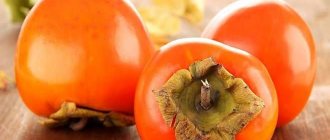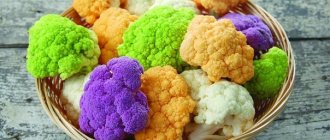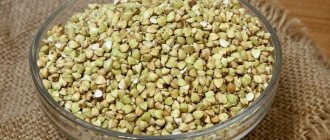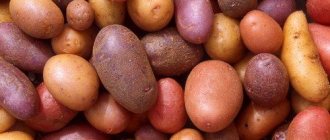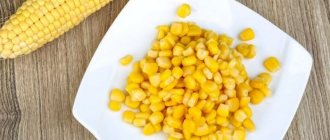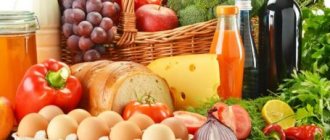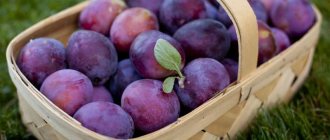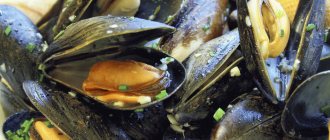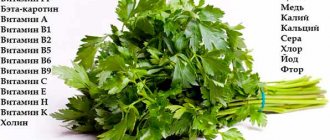A complex therapeutic diet for pancreatitis, which involves a number of restrictions on products, prohibits most dough dishes, especially when it comes to semi-finished products.
The question of whether dumplings should be classified as such types of food is quite complex. And a lot depends on the technology of their preparation. This means that when eating dumplings, you can find a way to ease some dietary restrictions.
Recommendations for use
For pancreatitis, dumplings are included in the list of dishes on which consumption restrictions are imposed. However, there are some recommendations that allow you to make concessions in your diet:
- Carefully monitor the expiration date. When purchasing finished products, you must pay attention to the date of manufacture. The fresher the semi-finished product, the less harmful it is.
- When preparing the product, the dough should be as thoroughly cooked as possible. Before eating, it is important to make sure that there are no undercooked ingredients in the dish.
- It is best to use homemade products. This makes it easier to track the quality of the dumplings and make the dish more harmless.
- It is recommended to cool the dish to room temperature before eating.
- Consumption should be moderate. A serving of no more than two hundred grams per day can be considered safe.
- It is recommended to chew food thoroughly. Thus, the load on the pancreas and stomach will be reduced.
- It is not advisable to use sauces and dressings for the dish.
- The least harm can be caused by the so-called “lazy” dumplings made using fast technology.
- All products for preparing the dish must be fresh and comply with the standards of the diet for pancreatitis.
The above recommendations can be used both for diseases of the gastrointestinal tract and in the absence of any restrictions for the purpose of prevention. In addition, it is important to remember that a standard semi-finished product is difficult to classify as a dietary dish, so eating it every day is not recommended. It is best to include the product in the menu no more than once a week.
Diet for cholecystitis
Chronic diseases of the gallbladder and liver, such as cholecystitis, require long-term complex treatment. However, therapeutic nutrition – diet No. 5 – is of exceptional importance.
It often happens like this: as soon as you break your diet, deviate from the diet recommended by your doctor, or indulge in an extra cake or fatty kebab, pain occurs in the right hypochondrium, bitterness appears in the mouth, and sometimes an acute attack of cholecystitis (inflammation of the gallbladder) occurs.
Proper nutrition, adherence to its regimen and dietary recommendations help prevent exacerbations of liver and gallbladder diseases.
The liver is involved in almost all types of metabolism: carbohydrate and fat, protein and water-salt, vitamin and mineral. That is why it is called the biochemical laboratory of the body. The liver neutralizes toxic metabolic products formed in the intestines from food debris. In some severe forms of liver damage, toxic substances can accumulate in the body, causing harmful effects on the central nervous system. This is one of the reasons for the increased irritability and “biliousness” of a person suffering from these ailments.
Physiologists have found that the fact of eating in itself is an excellent stimulator for the flow of bile into the duodenum. Therefore, the simplest choleretic remedy is food intake. You need to eat little by little, at least 4-5 times a day, preferably at the same hours. Second breakfast and afternoon snack can be a sandwich with cheese, boiled meat or fish, and an apple.
Overeating and large meals have an adverse effect on the liver and gallbladder, contributing to the occurrence of spasms of the biliary tract and a painful attack.
Diet No. 5 is characterized by a sufficient amount of complete protein contained in milk and dairy products, fish and meat; vegetables and fruits - sources of plant fiber (fiber) and various vitamins - A, C, group B, etc., especially necessary for the body with liver diseases.
The diet also includes vegetable oils (sunflower, corn, olive, cottonseed, etc.), which have a choleretic effect. Limit foods and dishes that patients do not tolerate well.
Overeating and large meals have an adverse effect on the liver and gallbladder, contributing to the occurrence of spasms of the biliary tract and a painful attack.
Remember, the following should be excluded from the diet: rich broths (meat and chicken, fish and mushroom), refractory fats (pork, lamb, beef, especially frying), fatty meats, poultry (duck) and fish. In addition, exclude fried foods that adversely affect the gallbladder and liver, any smoked foods, spicy seasonings, butter dough, products containing a lot of essential oils and therefore irritating the mucous membrane of the digestive tract (radish, radishes, turnips, onions, garlic, horseradish, sorrel ), as well as cakes and cream pies, chilled drinks and ice cream, all alcoholic drinks, including beer.
It is necessary to limit the consumption of marinades and hot sauces, spices and seasonings (mustard, pepper, vinegar), egg yolks (no more than one per day is allowed).
The following products and dishes are recommended:
- vegetable broth soups with various cereals, vegetables, pasta, borscht, beetroot soup, fresh cabbage soup, dairy soup with cereals, fruit soup with rice;
- low-fat varieties of meat, poultry (chicken, turkey) and fish (cod, ice cod, pike perch, hake, navaga, etc.) in boiled, baked (pre-boiled), stewed (with juice removed); beef stroganoff, pilaf made from boiled meat. Meat and poultry are prepared mainly in pieces, but can also be in the form of meatballs, cutlets, meatballs;
- fresh tomatoes, cucumbers, carrots, white cabbage; boiled and stewed carrots, potatoes, beets, zucchini, pumpkin, cauliflower. Allowed are non-acidic sauerkraut, fresh herbs (parsley, dill), and legumes - green peas. Onions can be added to dishes after boiling;
ul
In acute pancreatitis and exacerbation of chronic
The period of treatment of acute pancreatitis and exacerbation of its permanent form always begins with fasting and a strict diet, excluding complex foods such as dumplings or dumplings. Semi-finished products, even homemade ones, are strictly prohibited.
Its components will be absorbed very poorly after a meal, since enough enzymes will not be produced for this. As a result of the disorder, diarrhea, pain in the abdomen and right hypochondrium, and a general deterioration in the patient’s condition may occur. Less harmful “lazy” dumplings are also prohibited.
Features of dietary nutrition
Pancreatitis is a disease that is accompanied by all sorts of pathological processes in the pancreas, which leads to disruption of the enzyme-forming abilities of the internal organ. To prevent complications from developing, the doctor prepares a special diet.
When there is a lack of certain enzymes, the digestive system cannot function fully. As a result, the symptoms of the disease are accompanied by heartburn, bloating, belching, and diarrhea. All this can be avoided by following a diet developed by the attending physician based on the individual characteristics of the patient’s body.
During the period of remission of the chronic form
There are no strict restrictions on the use of dumplings during the recovery period. However, including them in the diet is highly not recommended if remission is not sustainable. Thus, you can eat the product only three to four weeks after the start of recovery.
The least harmful are those types of semi-finished products that contain a minimum amount of dough. Dumplings with cottage cheese, strawberries and potatoes are allowed in limited quantities. At the same time, the following types of fillings are prohibited:
- sauerkraut;
- mushrooms;
- sour berries and fruits;
- meat and liver products.
Any fillings and dressings that do not correspond to the list of permitted products for pancreatitis are also prohibited for preparing dumplings.
Recipe for lazy dumplings with cottage cheese for pancreatitis
“Lazy” dumplings are one of the simplest and most delicious dishes made from cottage cheese, superior in their healthiness to semi-finished products prepared according to the classic recipe.
It can be included in the diet of a healthy person and patients suffering from various diseases of the digestive system (provided that less sugar is used in the recipe). In order to prepare a dietary dish, you must complete the following steps:
- To half a kilogram of fresh cottage cheese (chopped or grained) add two tablespoons of powdered sugar or granulated sugar. Grind.
- Add one whole chicken egg, a pinch of salt and five tablespoons of flour. Knead the dough.
- From the resulting dough, make a sausage about two centimeters thick. Cut into small pieces. You can also roll them into balls for convenience.
- Place the resulting dumplings in boiling, slightly salted water. Cook for about ten minutes. Drain the water.
Dumplings must be thoroughly cooked. If you are following a therapeutic diet, you can serve them with a small amount of low-fat sour cream, yogurt or milk sauce.
It is useful to replace wheat flour with a gluten-free analogue, as well as rice, oat or buckwheat flour.
The nutritionist advises:
For chronic diseases of the liver and gall bladder, accompanied by exacerbation of chronic gastritis, gastric or duodenal ulcers, raw vegetables, fruits and rye bread should be excluded from the diet. Cook food boiled or steamed (do not bake).
- rice, semolina, buckwheat, oatmeal, millet porridge. You can prepare crumbly porridges, cereals, puddings, rice pilaf with fruits, vermicelli, boiled and baked pasta (but not fried);
- soft-boiled egg (one if well tolerated), egg white omelet;
- whole milk, condensed milk, dry milk, cottage cheese, kefir, yogurt, acidophilus, mild cheeses. Limit the consumption of cream and sour cream. They also prepare cottage cheese, various puddings, souffles and dumplings;
- fruits and ripe berries of sweet varieties, raw and baked (apples). You can eat plums, cherries, currants, raspberries, strawberries;
- milk, sour cream and fruit sauces (the flour for the sauce is not fried);
- “Doctorskoy” type sausage, lean ham, jellied fish, cheese, boiled tongue, salads from raw and boiled vegetables, herring (soaked only);
- jam, honey, marshmallows, marshmallows, jams;
- weak tea with milk, with lemon, natural weak coffee with and without milk, compotes of fresh fruits, berries and dried fruits;
- fruit and berry juices and jelly, vegetable juices, rosehip decoction;
- butter and vegetable oil (added only to ready-made dishes);
- wheat bread, rye bread (preferably slightly dried), crackers, savory cookies, savory dough products.
ul
How to cook it correctly?
It is best to eat only lazy dumplings during a diet. However, once every one to two weeks, regular ones can be added to the menu in small quantities. Choux pastry can be considered the least harmful for production. The recipe is implemented as follows:
- Place two cups of flour in a container and pour half a cup of boiling water over it.
- Add two eggs, a pinch of salt, another glass of water and four glasses of flour to the mixture.
- Knead the dough. Wrap the raw material in cling film and leave to rest for an hour.
Now the dough can be used to make dumplings with any filling. The product will need to be cooked in boiling water for seven to ten minutes.
From potatoes
For the filling you need to prepare mashed potatoes:
- Boil five potatoes until soft.
- Crush the potatoes. Add a little butter. Mix.
- Add chopped herbs to taste.
Now you can form semi-finished products with the filling. But you can also make “lazy” dumplings from mashed potatoes. For this:
- Add an egg and a pinch of salt to the cooled potatoes. Mix.
- Gradually add seven tablespoons of flour and knead the dough. It should lag behind your hands.
The cutting of such dough is exactly the same as in the case of cottage cheese. The cooking process is similar.
With cherry
Cherry dumplings can also be prepared in two versions: classic and quick. A regular dish is prepared according to the standard; in this case, you only need to add pitted berries to the juice.
A quick recipe involves preparing the dough as for “lazy” dumplings with cottage cheese. However, you will need to place a cherry inside each ball. This dish will put less strain on the pancreas.
With cottage cheese
The instant recipe is listed above. For classic ones, you need to prepare the filling. To do this, you will need to take four hundred grams of cottage cheese, add a chicken egg and a pinch of salt to it, and mix. You can add the allowed amount of sugar to taste.
With cabbage
The classic filling involves frying and stewing cabbage with the addition of onions and carrots. In order to prepare raw materials that are less harmful to the pancreas, it is better to use the following recipe:
- Finely chop two hundred grams of fresh white cabbage.
- Heat a frying pan with one tablespoon of oil. Lay out the chopped vegetables.
- Lightly fry the cabbage, cover and reduce heat by half.
- Stir, add a couple of tablespoons of boiling water and simmer until cooked until the slices become soft.
This filling can be used for dumplings with choux pastry. It is enough to cook the product for five to ten minutes, depending on the size of the juiciness. Eat after cooling to room temperature.
